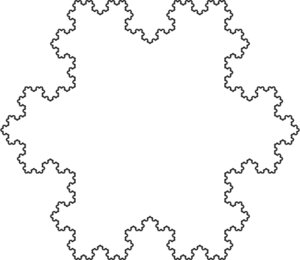See fractal.
The Koch curve or any curve constructed in a similar way.
An example of a curve having fractal dimension. Starting with an equilateral triangle, the middle third, PQ, say, of a side is replaced by the two lines PR and RP so that P, Q, and R form the vertices of a smaller equilateral triangle, with R outside the original enclosed region. This process is repeatedly applied to each line segment. The resulting ‘curve’ is the snowflake curve and has infinite length but encloses a finite area. Its fractal dimension is defined to be ln 4/ln 3, since each ‘edge’ of the curve contains four copies each of 1/3 size.

Snowflake curve. This is an example of a curve with fractal dimension≠1.
- Economic Community of West African States
- economic determinism
- economic development
- economic distance
- economic dynamism
- economic efficiency
- economic geography
- economic geology
- economic growth
- economic imperialism
- economic indicators
- economic integration
- economic man
- economic meltdown
- economic model
- economic pipe diameter
- economic planning
- economic policy
- economic potential
- economic profit
- Economic Recovery Tax Act of 1981
- economic rent
- Economic Report of the President
- economics
- economic sanctions